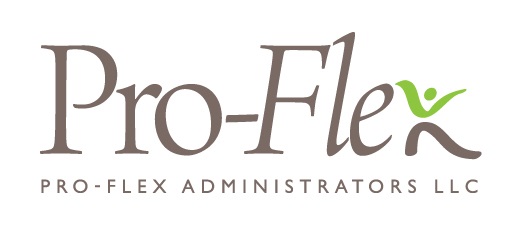IRS Releases New Proposed Regulations for Individual Coverage HRAs
Introduction
On September 26,2019, IRS released proposed regulations to clarify the application of the
employer shared responsibility provisions (employer mandate) and certain nondiscrimination
rules under the Internal Revenue Code to health reimbursement arrangements (HRAs) and other
account-based group health plans integrated with individual health insurance coverage or
Medicare (individual coverage HRAs), and to provide certain safe harbors with respect to the
application of those provisions to individual coverage HRAs. The proposed regulations are
intended to facilitate the adoption of individual coverage HRAs by employers, and taxpayers
generally are permitted to rely on the proposed regulations. Employers generally may rely on the
proposed regulations for plan years beginning before the date that is six months after final
regulations are published. The following is a summary of those provisions.
Eligibility for Premium Tax Credits
An individual is eligible for the Premium Tax Credit (PTC) for a month if the he or she satisfies
various requirements for the month (a coverage month). Among other requirements, an individual
is not eligible for PTC for any month if either: (1) he or she is eligible for coverage under an eligible
employer-sponsored plan and that coverage is affordable and provides minimum value (MV); or
(2) he or she enrolls in an eligible employer-sponsored plan, even if the coverage is not affordable
or does not provide MV. An individual is ineligible for the PTC for a month if he or she is (1)
covered by an HRA, or (2) eligible for an HRA that is affordable and provides MV for the month
(provided the HRA does not consist solely of excepted benefits).
An individual coverage HRA is considered to be affordable for a month if the employee’s required
HRA contribution for the month does not exceed 1⁄12 of the product of his or her household
income for the taxable year and the required contribution percentage (9.78% for 2020). The
required HRA contribution is the excess of: (1) the monthly premium for the lowest cost silver plan
for self-only coverage of the employee offered in the Exchange for the rating area in which the
employee resides (the PTC affordability plan), over (2) in general, the self-only amount the
employer makes newly available to the employee under the individual coverage HRA for the
month (the monthly HRA amount). An individual coverage HRA that is affordable is treated as
providing MV. The final PTC regulations apply for taxable years beginning on or after January 1,
2020.
Employer Shared Responsibility Provisions – Determining Affordability
Whether an offer of an individual coverage HRA is affordable for an employee depends, in part,
on the monthly premium for the PTC affordability plan for that employee (that is, the lowest cost
silver plan for self-only coverage of the employee offered through the Exchange for the rating
area in which he or she resides). For purposes of determining affordability, an ALE will be
allowed to use the lowest cost silver plan for the employee for self-only coverage offered
through the Exchange in the rating area in which the employee’s primary site of
employment is located, instead of the lowest cost silver plan for the employee in the rating
area in which the employee resides (the location safe harbor). The Treasury Department
and the IRS note that an ALE that wants to contribute one set amount to individual
coverage HRAs that would protect the ALE from liability under employer mandate penalty
could set the amount by determining affordability based on the lowest cost silver plan that
has the highest cost premium for self-only coverage for any of its full-time employees (that
is, nationally or based on multiple rating areas or states).
Employee’s Primary Site of Employment
For purposes of the location safe harbor, an employee’s primary site of employment is the location
at which the employer reasonably expects the employee to perform services on the first day of
the plan year (or on the first day the individual coverage HRA may take effect, for an employee
who is not eligible for the individual coverage HRA on the first day of the plan year), except that
the employee’s primary site of employment is treated as changing if the location at which the
employee performs services changes and the employer expects the change to be permanent or
indefinite. In that case, in general, the employee’s primary site of employment is treated as
changing no later than the first day of the second calendar month after the employee has begun
performing services at the new location.
In the case of an employee who regularly works from home or at another worksite that is not on
the employer’s premises but who may be required by his or her employer to work at, or report to,
a particular worksite, such as a teleworker with an assigned office space, the worksite to which
the employee would report to provide services if requested is the applicable primary site of
employment. In the case of an employee who works remotely from home or at another worksite
that is not on the employer’s premises and who otherwise does not have a particular assigned
office space or a worksite to which to report, the employee’s residence is the primary site of
employment.
The lowest cost silver plan for an employee for a month, for purposes of the safe harbors
is the lowest cost silver plan in the part of the rating area that includes the employee’s
applicable location. An employee’s applicable location is either the employee’s primary
worksite, if the employer uses the location safe harbor, or the employee’s residence, if the
employer chooses not to use the location safe harbor.
Age Issues
A safe harbor for the age used to determine the premium of an employee’s affordability plan is
not provided. Rather, affordability of the offer of an individual coverage HRA for purposes of
employer mandate is determined, in part, based on each employee’s age.
The Treasury Department and the IRS also note that as a practical matter, if an employer wants
to make a single amount available under an individual coverage HRA to a class of employees
and ensure it avoids an employer shared responsibility payment, in general, the employer can
use the age of the oldest employee in the class of employees to determine the amount to make
available under the HRA to that class of employees.
For an employee who is or will be eligible for an individual coverage HRA on the first day of the
plan year, the employee’s age for the plan year is his or her age on the first day of the plan year,
and for an employee who becomes eligible for an individual coverage HRA during the plan year,
his or her age for the remainder of the plan year is the employee’s age on the date the HRA can
first become effective for the employee.
In order to avoid the need for employers to determine different lowest cost silver plans in one
location for employees of different ages, and to simplify the information that the Exchanges will
make available to employers, for purposes of the proposed safe harbors, the lowest cost silver
plan for an employee for a month is the lowest cost silver plan for the lowest age band in the
individual market for the employee’s applicable location.
Look-back Month Safe Harbor
For an individual coverage HRA with a calendar-year plan year, employers generally would
determine the benefits to offer, including the amount to make available in an HRA for the plan
year, well before mid-to-late fall of the prior calendar year. Further, the Treasury Department and
the IRS noted that under the employer mandate, ALEs are intended to be able to decide whether
to offer coverage sufficient to avoid an employer shared responsibility payment. ALEs are only
able to make that choice if they have timely access to the necessary information.
An employer offering an individual coverage HRA with a calendar-year plan year may use the
look-back month safe harbor. In determining an employee’s required contribution for any calendar
month, for purposes of employer mandate, an employer offering an individual coverage HRA with
a calendar-year plan year may use the monthly premium for the lowest cost silver plan for
January of the prior calendar year.
In addition, employers offering individual coverage HRAs with noncalendar year plan years (noncalendar year individual coverage HRAs) may also use the look-back month safe harbor, although
in that case the lookback month is different. For an employer offering a non-calendar year
individual coverage HRA, an employee’s required contribution for a calendar month is determined
for the employer mandate by using the monthly premium for the affordability plan for January of
the current calendar year.
An ALE may use the look-back month safe harbor in addition to the other safe harbors included
in the proposed regulations, and that an ALE may apply the look-back month safe harbor even if
the ALE decides not to use the location safe harbor and, instead, bases the affordability plan on
employee residence.
Change of location
Although the look-back month safe harbor allows the employer to use premium information from
the applicable look-back month to determine the cost of the affordability plan for each month of
the current plan year in determining the applicable premium, the employer must use the
employee’s applicable age for the current plan year and the employee’s applicable location for
the current month. In general, this means that the ALE may use the same premium (that is, the
premium based on the applicable look-back month, applying current employee information) for
each month of the plan year. However, to the extent the employee’s applicable location changes
during the plan year, although the ALE may continue to determine the monthly premium for the
applicable lowest cost silver plan based on the applicable look-back month, the ALE must use the
employee’s new applicable location to determine that monthly premium.
Consistency Requirement and Conditions for the Safe Harbors
Use of any of the safe harbors is optional for an ALE. An ALE may choose to apply the safe
harbors for any class of employees as defined in the final integration regulations, provided the
ALE does so on a uniform and consistent basis for all employees in the class. The consistency
requirement for the safe harbors is based on the classes of employees in the final integration
regulations for the sake of consistency with those rules and to reduce complexity for employers
in complying with both sets of rules.
Application of Current HHI Safe Harbors to Individual Coverage HRAs
To apply the HHI safe harbors ( Form W–2, ‘‘Wage and Tax Statement,’’ the employee’s rate of
pay, or the federal poverty line) to offer of coverage in an Individual Coverage HRA, the
employee’s required contribution must be based on the lowest-cost self-only coverage that
provides MV that the employer offers to the employee. In addition, in applying the HHI safe
harbors to an offer of an individual coverage HRA, the employee’s required HRA contribution is
to be used, taking into account any other applicable safe harbors under the proposed regulations.,
discussed above.
Minimum Value
An individual coverage HRA that is affordable is deemed to provide MV.
Reporting under Code Section 6055 and 6056
There are no changes to the reporting requirement for the employer mandate. It is anticipated
that guidance regarding reporting in connection with individual coverage HRAs will be provided in
other administrative guidance, including forms and instructions. It is also anticipated that the
guidance would permit the reporting of the employee’s required contribution based on the section
4980H safe harbor(s) used by the ALE, rather than the employee’s required contribution
determined under the final PTC regulations without application of the relevant safe harbors.
There are no changes for reporting under the individual mandate. However, the Treasury
Department and the IRS note that because the individual shared responsibility payment was
reduced to zero for months beginning after December 31, 2018, the Treasury Department and
the IRS are studying whether and how the reporting requirements should change, if at all, for
future years.
Application of Tobacco Surcharge and Wellness Incentives to Affordability Determination
For purposes of determining the premium for the lowest cost silver plan used to determine the
employee’s required HRA contribution:
(1) If the premium differs for tobacco users and non-tobacco users, the premium taken into
account is the premium that applies to non-tobacco users; and
(2) the premium is determined without regard to any wellness program incentive that affects
premiums unless the wellness program incentive relates exclusively to tobacco use, in which case
the incentive is treated as earned.
Implementation of Section 4980H Safe Harbors and Reliance on Exchange Information
ALEs may rely on the lowest cost silver plan premium information made available by an
Exchange for purposes of determining affordability. Employers are encouraged to retain
relevant records.
Other comments
The Treasury Department and the IRS confirm, for the sake of clarity, that the offer of an individual
coverage HRA is an offer of an eligible employer sponsored plan for purposes of employer
mandate. without regard to whether the employee accepts the offer.
An employer is considered to offer coverage to an employee if the employee has an effective
opportunity to elect to enroll in coverage at least once with respect to the plan year. Whether an
employee has an effective opportunity to enroll is determined based on all the relevant facts and
circumstances. Further, under B or Medicare Part C, an employee enrolled in Medicare may enroll
in the HRA, even though the employee may not be able to obtain individual health insurance
coverage due to his or her status as a Medicare enrollee. Thus, if a particular individual coverage
HRA may be integrated with Medicare, the offer of the HRA to an employee who is enrolled in
Medicare provides the employee an effective opportunity to enroll in the HRA and constitutes an
offer of coverage to the employee for purposes of the employer mandate. As a result, the offer is
taken into account in determining if the ALE offered coverage to a sufficient number of full-time
employees (and their dependents) for purposes of avoiding an employer shared responsibility
payment. In addition, because an individual enrolled in Medicare is not eligible for the PTC and
an ALE will only be liable for an employer shared responsibility payment for a month with respect
to a full-time employee if the full-time employee is allowed the PTC for that month, an ALE will
not be liable for an employer shared responsibility payment for a month with respect to a full-time
employee enrolled in Medicare for that month,
The offer of an excepted benefit HRA is not treated as an offer of an eligible employersponsored plan that is MEC for purposes of the employer mandate, regardless of whether the
excepted benefit HRA is, or may be, used to purchase Short-Term Limited Duration Insurance
(STLD)I.
Proposed Regulations Under Code Section 105(h)
HRAs, including individual coverage HRAs, generally are subject the nondiscrimination rules
under Code Section 105(h). An individual coverage HRA that satisfies the age variation exception
under the same terms requirement the final regulations will not be treated as failing to satisfy the
requirements to provide nondiscriminatory benefits) solely due to the variation based on age.
More generally, if the maximum dollar amount made available varies for participants within a class
of employees, or varies between classes of employees, then with respect to that variance, the
individual coverage HRA does not violate the requirement that any maximum limit attributable to
employer contributions must be uniform for all participants, if within each class of employees, the
maximum dollar amount only varies in accordance with the same terms requirement and, with
respect to differences in the maximum dollar amount made available for different classes of
employees, the classes of employees are classes of employees set forth in the final regulations.
Nonetheless, the Treasury Department and the IRS note that satisfying the terms of the
safe harbors under the proposed regulations does not automatically satisfy the prohibition
on nondiscriminatory operation under Code Section 105(h). Thus, among other situations,
if a disproportionate number of highly compensated individual (HCIs) qualify for and utilize
the maximum HRA amount allowed under the same terms requirement based on age in
comparison to the number of nonHCIs who qualify for and use lower HRA amounts based
on age, the individual coverage HRA may be found to be discriminatory, with the result
that excess reimbursements of the HCIs will be included in their income.
In the final proposed regulations, IRS also confirms that an ICHRA that only reimburses
insurance premiums is treated as an insured plan and is not subject to the Code Section
105(h) rules.
Application of Section 125 Cafeteria Plan Rules to Arrangements Involving Individual
Coverage HRAs
Pursuant to Coded section 125(f)(3), an employer generally may not provide a qualified health
plan purchased through an Exchange as a benefit under its cafeteria plan. Therefore, an employer
may not permit employees to make salary reduction contributions to a cafeteria plan to purchase
a qualified health plan (including individual health insurance coverage) offered through an
Exchange. However, this Code section does not apply to individual health insurance coverage
that is not offered through an Exchange (referred to as ‘‘off Exchange”).
Download the Report Here.






